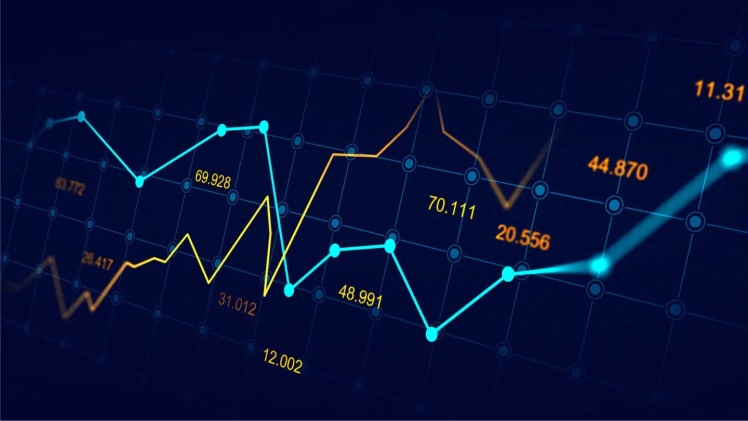Developing a robust trading system is essential for a forex trader’s success in the highly dynamic and volatile foreign exchange market. Backtesting and forward testing are two critical components of refining your strategy when you trade forex. These methods allow you to evaluate your trading system’s performance in different market conditions and ensure its effectiveness before risking real capital. This article will delve into backtesting and forward testing, their importance, and how to use them to perfect your forex trading system.
Understanding Backtesting: Testing Historical Data
Backtesting involves simulating your trading system using historical market data to assess how it would have performed in the past. Applying your strategy’s rules to past price movements allows you to evaluate its potential profitability and identify strengths and weaknesses. This historical analysis helps you fine-tune your approach and make data-driven adjustments.
Importance of Backtesting
Performance Evaluation: Backtesting allows you to gauge how your forex trading system would have performed in various market conditions. It provides valuable insights into its potential profitability and risk levels.
Strategy Refinement: Analysing backtesting results helps you identify flaws and inefficiencies in your trading system. You can make informed improvements to optimise your strategy by understanding what works and doesn’t.
Risk Management: Backtesting lets you assess your system’s drawdowns and identify potential risks. This information is crucial for developing appropriate risk management protocols and position-sizing strategies.
Tips for Effective Backtesting
Use Sufficient Historical Data: Ensure you have adequate historical data to test your forex trading system across different market conditions, including economic cycles and geopolitical events.
Realistic Assumptions: Be mindful of the assumptions you make during backtesting. For example, consider transaction costs, slippage, and order execution time, as they can significantly impact real-world trading results.
Overfitting Prevention: Avoid over-optimising your trading system to fit historical data perfectly. Overfitting can lead to unrealistic expectations and poor performance in live markets.
Exploring Modern Trading Tools
While backtesting and forward testing are fundamental to refining your forex trading strategy, it’s equally essential to be aware of the latest tools and software available in the market. These tools can significantly enhance your trading experience:
Stock Trading Software: One of the game-changers in the trading world is the use of advanced stock trading software. Such software offers real-time data, advanced analytics, and AI-driven insights to help traders make informed decisions. Whether you’re into forex, stocks, or commodities, having a reliable trading software can be a game-changer.
As traders refine their Forex trading systems through backtesting and forward testing methodologies, it’s crucial to broaden their understanding of market dynamics. Exploring the various factors that affect stock prices, such as economic indicators and market sentiment, can provide valuable insights. Click here for an in-depth exploration of what factors affect stock prices,
User-Friendly Interface: Modern trading tools prioritize user experience. With intuitive dashboards and easy-to-navigate interfaces, traders can quickly access the information they need without getting overwhelmed.
Continuous Updates: The financial world is ever-evolving. Hence, it’s crucial to choose software that frequently updates its features, ensuring you’re always ahead of the curve.
Incorporating advanced tools like stock trading software can complement your backtesting and forward testing efforts, ensuring you have a holistic approach to trading.
Bridging Traditional and Modern Approaches
The essence of this post underscores the significance of “backtesting and forward testing” in the realm of forex trading. These methodologies, deeply rooted in data and historical analysis, form the backbone of any successful trading strategy. When combined with modern tools like stock trading software, traders are equipped with a comprehensive toolkit. This fusion of traditional testing methods and cutting-edge technology ensures that traders are well-prepared to navigate the complexities of the financial markets with confidence.
Understanding Forward Testing: Implementing in Real-Time
While backtesting provides valuable insights, forward testing takes your forex trading system to the next level by implementing it in real-time market conditions. Instead of using historical data, forward testing allows you to apply your strategy to current or “live” market prices.
Forward testing provides real-world validation of your trading system’s performance. It helps you assess its behaviour under real market conditions and validate the findings from your backtesting phase.
Importance of Forward Testing
Real-Time Performance Evaluation: Forward testing enables you to monitor your trading system’s performance as it interacts with live market data. This lets you see how it responds to price movements and news events.
Adaptability and Market Fit: Not all trading systems that perform well in backtesting will succeed in real-time markets. Forward testing helps you determine if your strategy is adaptable and can handle the nuances of real-world trading.
Emotional Preparedness: Trading in live markets involves emotions, stress, and uncertainty. Forward testing can help you get accustomed to these psychological factors and improve your decision-making in real-time trading situations.
Tips for Effective Forward Testing
Start with a Small Capital: When implementing your forex trading system in real markets, start with a small capital size. This approach allows you to test the waters and minimise potential losses during the initial phase.
Keep Detailed Records: Maintain thorough records of your forward testing results, including all trades, profits, losses, and adjustments made to the system. These records will provide valuable insights for future optimisations.
Be Patient and Disciplined: During forward testing, stick to your trading system’s rules and avoid making impulsive decisions. Patience and discipline are essential qualities for successful forex traders.
Conclusion
Perfecting your strategy when you trade forex requires a careful and systematic approach. Backtesting and forward testing enables you to identify strengths, weaknesses, and potential risks, leading to a refined and reliable trading system. Incorporating backtesting and forward testing into your trading routine increases your chances of success in the challenging and rewarding world of forex trading.

